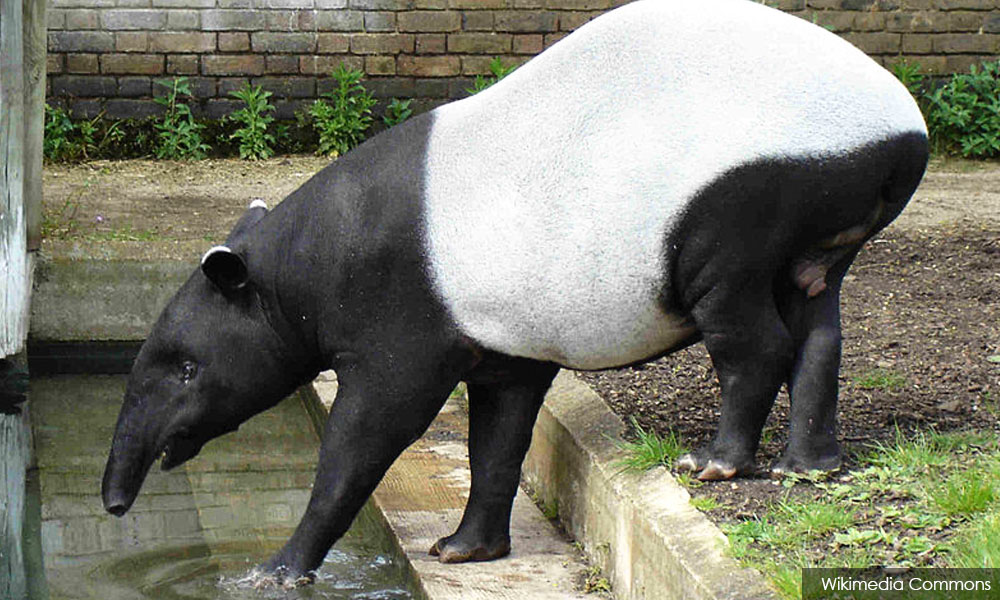LETTER | Wildlife monitoring is conceived as surveillance of natural environments or any of its components, done by large fieldwork such as long-term observation and recording of parameters.
Over time, researchers have started to optimise and innovate the way they analyse the large growing data and monitoring scale.
One of the ways researchers optimise and tackle the challenge of wildlife conservation is the use of artificial intelligence technology.
In monitoring efforts, AIs have a significant impact in assisting data collection and image identifications, as the machine learning algorithm can analyse and process data faster than doing it manually.
In 2023, WWF used camera traps that had AI recognition in Eastern Australia to initiate a wildlife monitoring project.
During their research, they were able to capture more than seven million images of wildlife from various species, including koalas and wombats.

However, to process those vast numbers of images, it would take years to analyse each of them to gain information.
Thus, WWF introduced an AI camera data trap called Wildlife Insights which automatically identifies what species was in the photo as well as filtering out blank images.
Wildlife Insights was able to identify 1,300 different species, some just from features of the animals like from the tail and nose of a greater glider.
AI can also contribute to innovative techniques in wildlife conservation.
For example, AI-powered drones can be equipped with thermal imaging cameras, allowing researchers to gain valuable insights into behaviour, population dynamics and habitat preferences of various species the researchers couldn’t otherwise do.
Applications include monitoring wildlife intrusions by mammals such as elephants, tigers, monkeys, wild boars, tapirs, and palm civets.
Managing smaller mammals
The technology could also be used to manage smaller mammalian pests like rodents in oil palm plantations, paddy fields, vegetable farms, and other agricultural areas. These challenges are particularly prevalent in Malaysia’s agricultural sector.
In 2022, researchers in the Ngoye Forest, South Africa utilised drones with multispectral sensors to detect and attempt to save an endangered cycad plant species called Encephalartos woodie.
The use of AI drone surveys allowed them to scan approximately 195 acres of the forest to find more about the plant species.
While the search continues, the drone also is proven effective in identifying and mapping cycad populations. This approach allows them to provide non-invasive means to monitor and protect endangered species in remote and inaccessible areas.
Addressing ethical issues
Despite the advantage AI offers to the wildlife monitoring scene, there are ethical issues regarding its use.
The reliance on AI training more often than not involves collecting sensitive data about wildlife and their habitats, potentially causing infringement on the privacy of local communities.
It also may capture unintended human activities in the wildlife by the usage of constant camera or drone monitoring, thus leading to further ethical dilemmas regarding surveillance and consent.
The issues above have to be prevented by incorporating data privacy. Transparency should also be prioritised and the public should be informed that AI is being used for wildlife conservation efforts.

Another issue with the AI system is the bias in AI collection. AI that is trained in incomplete or under-representative datasets might misidentify or overlook animals, as they will then lead to imbalanced conservation efforts due to some animals getting more attention than others.
This presents questions about the reliability and objectivity of AI-generated information in wildlife media conservations.
It’s important to ensure accountability and responsible decision-making for the use of AI as well as maintaining multiple approaches to conservation efforts to mitigate bias in data collection.
There are also issues regarding efficiency and cost-effectiveness of AI technology. The overreliance on AI in wildlife conservation can lead to unintended consequences for the local community and economies, as the traditional methods of wildlife observation such as employing the locals and photographers may be overshadowed by AI technology.
This can cause disempowerment in jobs and tourism, as the livelihoods of those who rely on media production for their income can be affected.
Despite the previous ethical concerns, it is crucial to consider the integration and potential benefits of AI into wildlife conservation.
The integration of AI introduces challenges and demands ethical considerations, thus, it’s important to approach these technologies with a balanced perspective.
By addressing ethical issues such as privacy, ensuring correct datasets and diverse representation and being transparent with the local communities, AI can further enhance our understanding of wildlife and contribute to our future conservation efforts and projects.
AUFA ANANDA RIZQI WIBOWO is an undergraduate student of Applied Sciences at UCSI University.
HASMAHZAITI OMAR is an associate professor at the Institute of Biological Sciences, Faculty of Science, Universiti Malaya.
The views expressed here are those of the author/contributor and do not necessarily represent the views of Malaysiakini.

